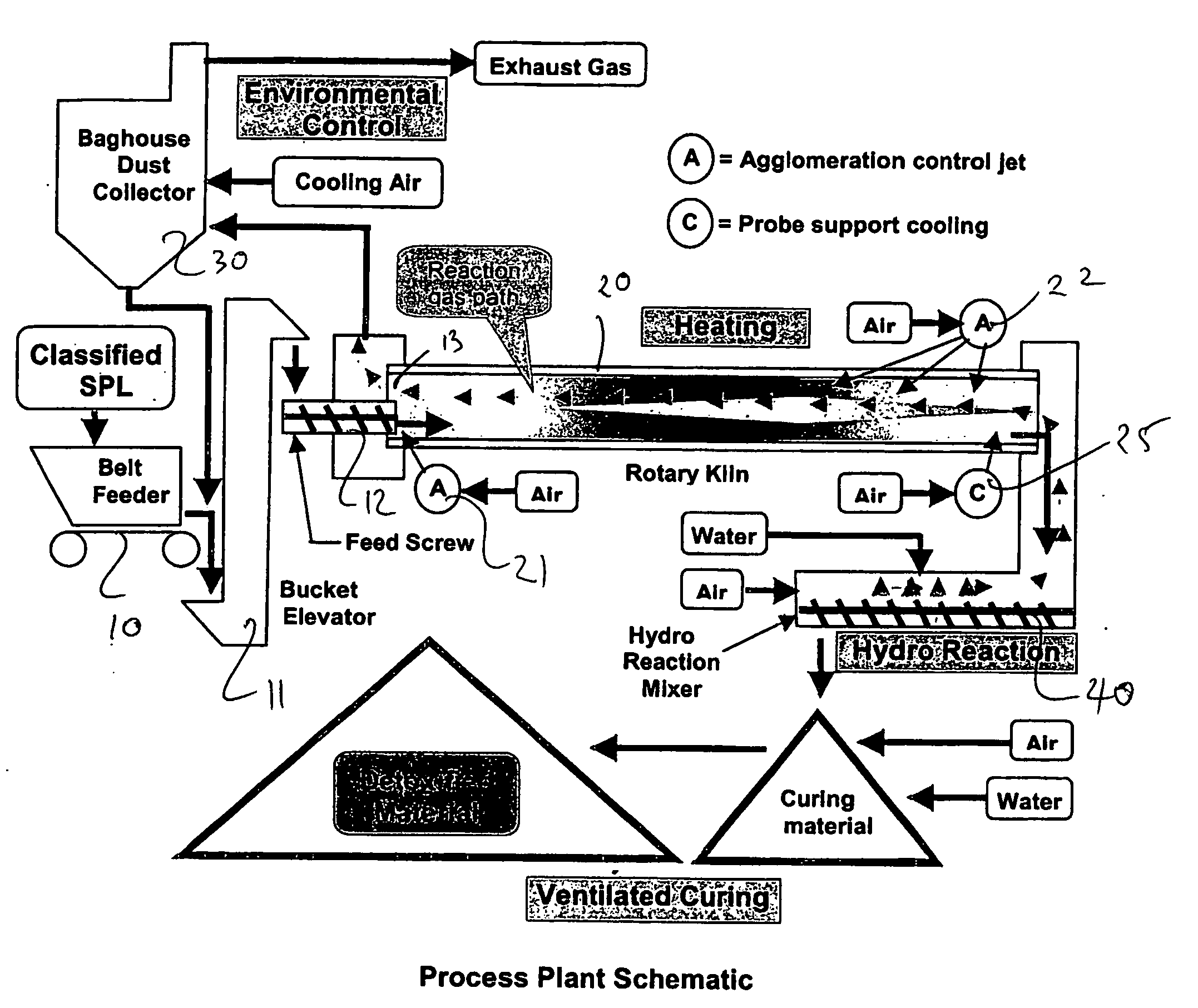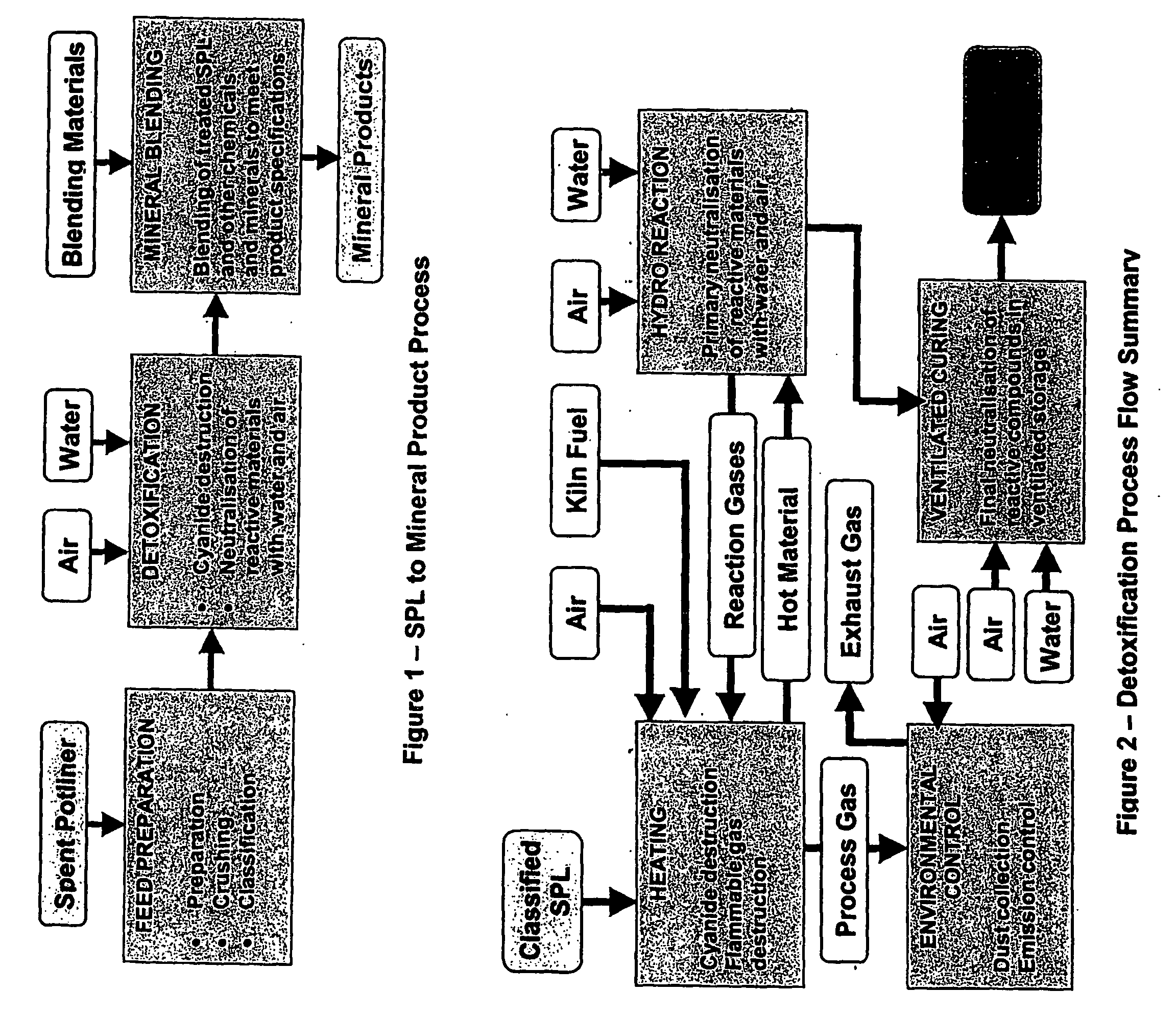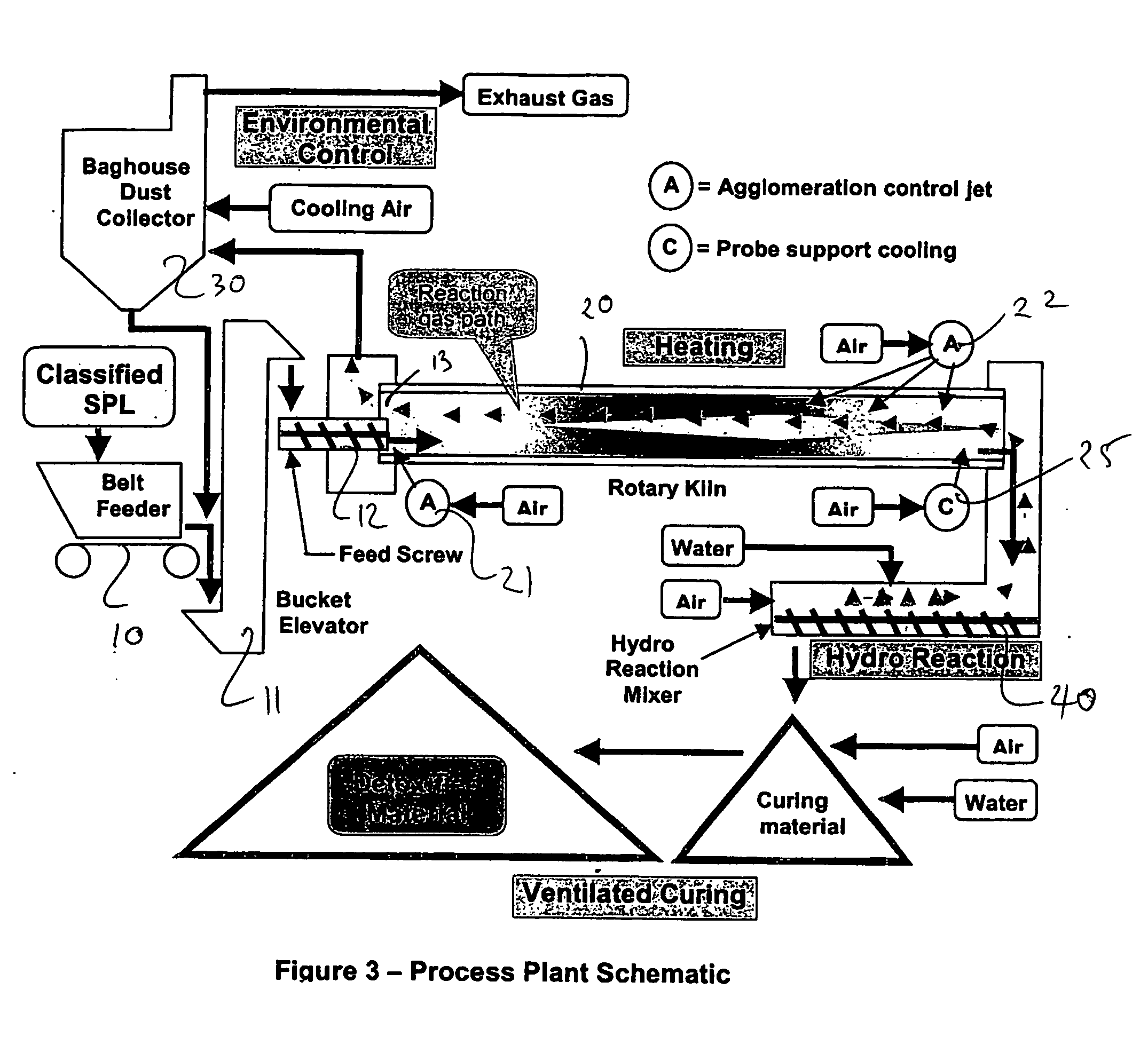Treatment of smelting by-products
a technology of smelting by-products and by-products, which is applied in the direction of inorganic chemistry, halogen/halogen acid, transportation and packaging, etc., can solve the problems of spl being hazardous, environmental hazards, methane and hydrogen being a potential explosion hazard, etc., and achieve the effect of preventing agglomeration
- Summary
- Abstract
- Description
- Claims
- Application Information
AI Technical Summary
Problems solved by technology
Method used
Image
Examples
Embodiment Construction
[0021] An outline of the process for treating a spent potliner (SPL) of an aluminium smelter and producing a mineral product is shown in FIG. 1 in three main steps, namely, [0022] (1) feed preparation in which the spent potliner is prepared crushed and classified, [0023] (2) detoxification in which the material is heated in the presence of air to destroy the presence of cyanide and mixed with water to cause neutralisation of reactive materials, and [0024] (3) a blending step in which treated SPL is mixed with other materials to produce mineral products of particular specifications which can be reused.
[0025] The feed preparation step involves recovery of the SPL material either from a storage depot or directly from the smelter pots, primary segregation of aluminium metal, carbon material and refractory materials and crushing size classification and secondary segregation of the materials into like categories. The crushing and classification steps are conventional to those skilled in ...
PUM
| Property | Measurement | Unit |
|---|---|---|
| temperature | aaaaa | aaaaa |
| temperature | aaaaa | aaaaa |
| temperatures | aaaaa | aaaaa |
Abstract
Description
Claims
Application Information
 Login to View More
Login to View More - R&D
- Intellectual Property
- Life Sciences
- Materials
- Tech Scout
- Unparalleled Data Quality
- Higher Quality Content
- 60% Fewer Hallucinations
Browse by: Latest US Patents, China's latest patents, Technical Efficacy Thesaurus, Application Domain, Technology Topic, Popular Technical Reports.
© 2025 PatSnap. All rights reserved.Legal|Privacy policy|Modern Slavery Act Transparency Statement|Sitemap|About US| Contact US: help@patsnap.com



